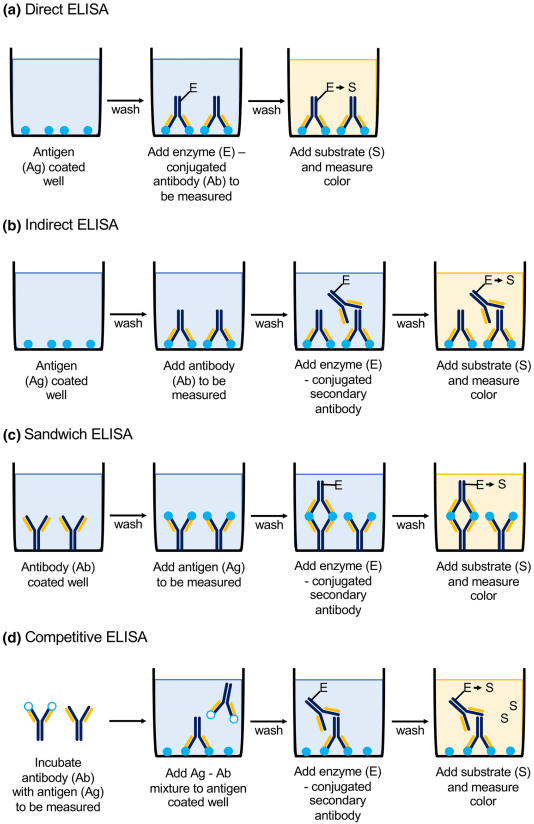ELISA Protocol

Since its invention in 1971, the ELISA method is commonly used to detect and quantify a specific substance in a sample, usually antigens or antibodies. After more than 50 years of development, ELISA was gradually widely applied in various fields in biotechnology. Moreover, due to its convenience and high sensitivity, ELISA is usually used in the test of biomarkers in the clinic diagnosis of many diseases. While the commercial value of ELISA was realized, kinds of ELISA kits have come into the market. Although based on similar principles, the protocols and properties of different ELISA kits share a little difference. As an advanced biotech company, Creative Biolabs has established mature ELISA platforms and promoted related products on the market, such as NAA detection kits. Moreover, based on our skilled groups and rich experience, we also launched commercial or customized ELISA services for our clients.
General Protocol Steps of ELISA
Although it is simple, the ELISA method consists of a number of steps while different types share similar protocols. After the preparation of standards and washing solutions, we can continue the analysis following these steps: (1) the ligand should be immobilized on the surface of the plate by suitable methods; (2) block the plate with sealing agents such as BSA; (3) add required antibodies or antigens and enzyme in order with fully incubation and washing; (4) add the enzyme substrates and stop the reaction after the color turning; (5) Reading the result and calculate the concentration.
 Fig.1 General protocols of direct, indirect, sandwich, and competitive ELISA.1
Fig.1 General protocols of direct, indirect, sandwich, and competitive ELISA.1
Special Concerns in NAA ELISA
Considering the source and properties of natural-autoantibody (NAA), the NAA is usually tested by sandwich ELISA, while the samples are the serum of people or other animals commonly. Therefore, the most important point in collecting biological samples is NAA degradation, which is usually caused by proteases. Hence protease inhibitors should be added while collecting samples simultaneously. In the progress of analysis, among the most common analytical errors are the degradation of reagents, equipment errors, pipettes that do not measure correctly, and not enough biological samples. After reading the absorbances of the microplate reader, the concentrations can be calculated. However, due to other antibodies in serum, false positives should be carefully identified.
Nowadays, as a diagnostic test used to detect analytes from an array of samples, ELISA can rapidly provide accurate results in an increasingly cost-efficient manner. If you are interested in our ELISA platform for NAA detection, please feel free to contact us for more details.
Reference
- Boguszewska, Karolina, et al. "immunoassays in DNA damage and instability detection." Cellular and molecular life sciences 76.23 (2019): 4689-4704.

